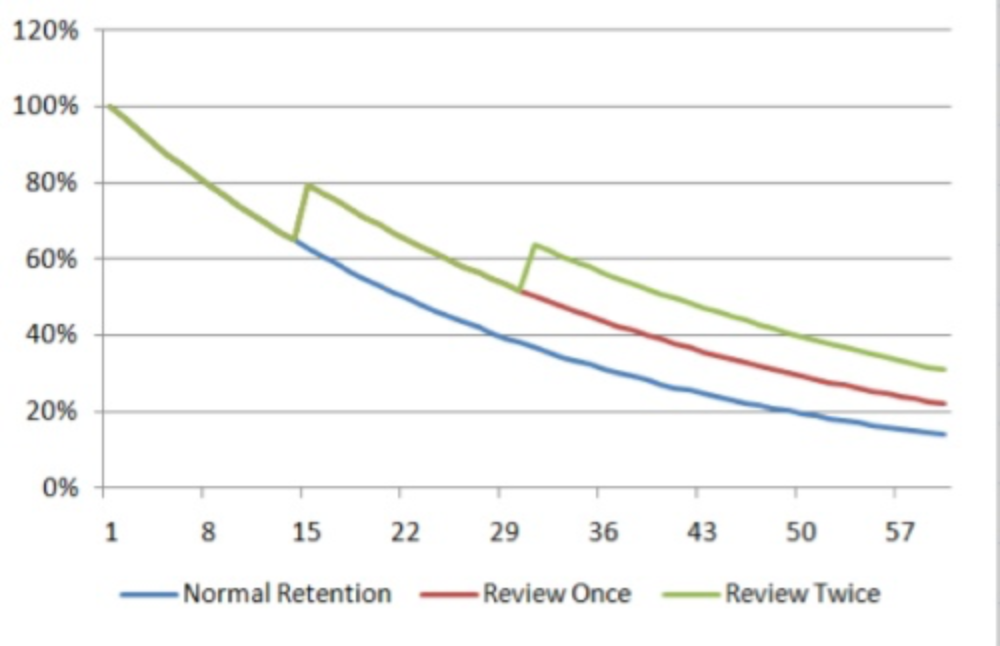Ebbinghaus Forgetting Curve
Our memory and power of recall deteriorates rapidly if we do not reinforce what we have learned.
In 1895 Herman Ebbinghaus published some fascinating research which has significant and direct implications on how we design and then deliver learning, training or development. It also underpins the ultimate effectiveness and results that we obtain as professional developers and trainers.
His research indicated that total recall (100%) for him was achieved only at the time of acquisition. Following that, retention dropped away very quickly:
- Within 20 minutes 42% of the memorised list was lost.
- Within 24 hours 67% of what he learned had vanished.
- A month later 79% had been forgotten with a meagre 21% retention.
One of the biggest aids to increasing retention is repetition. The review of learnt material, the revisiting of content that has previously been covered. By introducing repetition learning may not necessarily be enhanced but retention most certainly will.
What does this mean for trainers and developers? It means exercises and activities aimed at reviewing and revisiting learnt content can be beneficial to improving retention and recall. As part of a standard lesson plan for whatever medium a process of revision is appropriate and helpful to learners. It is often seen as a challenge by deliverers as they have so much content they must cover in a limited time.
Research has shown that reviewing at regular intervals does increase retention and that over time, less frequent review is needed.
The graph below demonstrates the effect of reviewing what you learn once after two weeks, or twice – after 2 weeks, and then after a month:

An alternative strategy is three hours, three days, three weeks. But, whatever, remember to include some form of revision.



